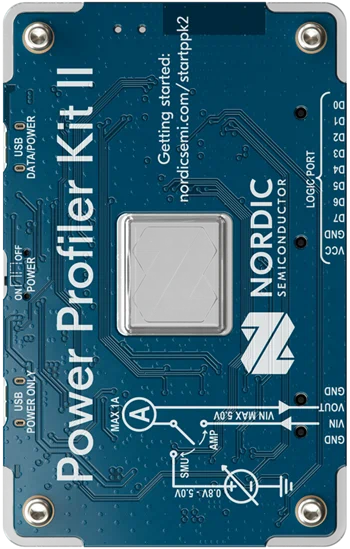I do a lot of IoT development involving battery-powered wireless devices. These devices must have very low average power consumption to facilitate long battery life. They typically spend most of their time in a low-power sleep mode, drawing a few uA or even nA and then wake periodically to take measurements, operate controls, and transmit and receive messages. Transmitting can draw hundreds of mA.

So the dynamic range of current draw can span 5 orders of magnitude! Moreover active periods are often very brief (sometimes just tens of uS). Measuring that sort of highly dynamic power consumption with fast transient events is a big challenge.
Current is generally measured by measuring the voltage drop across a shunt resistor. Unfortunately, a shunt resistor large enough to allow measuring a few uA will introduce unacceptable voltage drop if trying to pass 500mA. So measurement devices must have many shunts and measurement circuits and be able to switch them in/out of line very rapidly while sampling the voltage drops across the shunts very fast.
My go-to device for this sort of dynamic power analysis is the Joulescope which is simply phenomenal. It has 1.5nA-1mA resolution (depending on the measurement range), samples at 2MS/s (250kHz BW) and switches shunts as fast as 1us. The software is excellent too. The only problem is: it’s expensive (around $1K), so it’s not something I can put on every bench or easily design into test fixtures.
Hence my latest tool: the Nordic Power Profiler Kit II (PPK2) which is sort of a poor-man’s Joulescope. It has many of the Joulescope’s features, but all are spec’d significantly worse. It’s also 1/10 the price. It also has one feature that the Joulescope lacks and is quite useful. The PPK2 is a credit-card sized device, powered by one or two micro-USB cables (depends on how much current you need…in my case, one is usually enough). It samples much slower (100Ks/s max) and is limited to 5V; resolution varies from 100nA to 1mA depending on the shunt range, it doesn’t measure voltage at all (so you can’t use it to observe voltage drop), and the software is significantly less mature. It looks like a bare board, but the components are actually covered/protected by a clear acrylic shield so it’s bench/desk safe.
On the plus side it has a built in programmable power supply that can output 0v8 to 5v0 (drawn from the USB supply). That by itself is an incredibly handy feature. With the Joulescope, I need it and a bench power supply to power the DUT. The ability to power a 3v5 DUT *and* monitor its dynamic power behavior while only tying up one USB port and the bench space needed for a credit-card-sized device is super-cool. It also has 8 digital inputs you can use as a poor-man’s logic analyzer to correlate digital events (e.g. turn on transmitter) with power consumption. The Joulescope has such inputs too.
So far, I like it. The measurements match my Joulescope nicely – except for very fast transient events where the Joulescope shines and the PPK2 suffers. The built-in programmable supply is awesome. The software needs some work. Most critically, the data logger needs a continuous mode where it fills the RAM buffer and then wraps; the software currently fills the buffer and then stops, requiring a manual restart to keep monitoring current consumption and resetting all counters. This is particularly bad when what you want to do is measure average power consumption over a long period (e.g. a day or a week). At 100Ks/s, the RAM buffer fills very quickly so you can’t monitor the DUT at high speed for more than 500s. At 1Ks/s you can monitor for 13h, but fast events will be missed or improperly measured which defeats the purpose of such devices. What’s needed is a continuous mode that wraps when the RAM buffer is full but keeps accumulating average, max, and total power used. (Nordic are you listening?)
Overall, I’m pleased with the PPK2 so far and expect to buy more for use on benches and in test fixtures. If you can’t afford a Joulescope (or just want a super-compact USB-powered variable supply), the PPK2 seems like a great choice.
